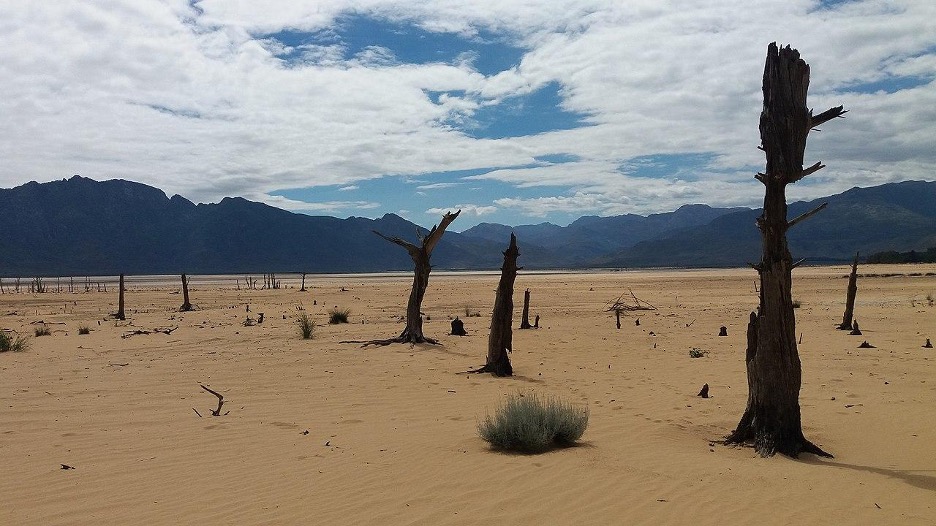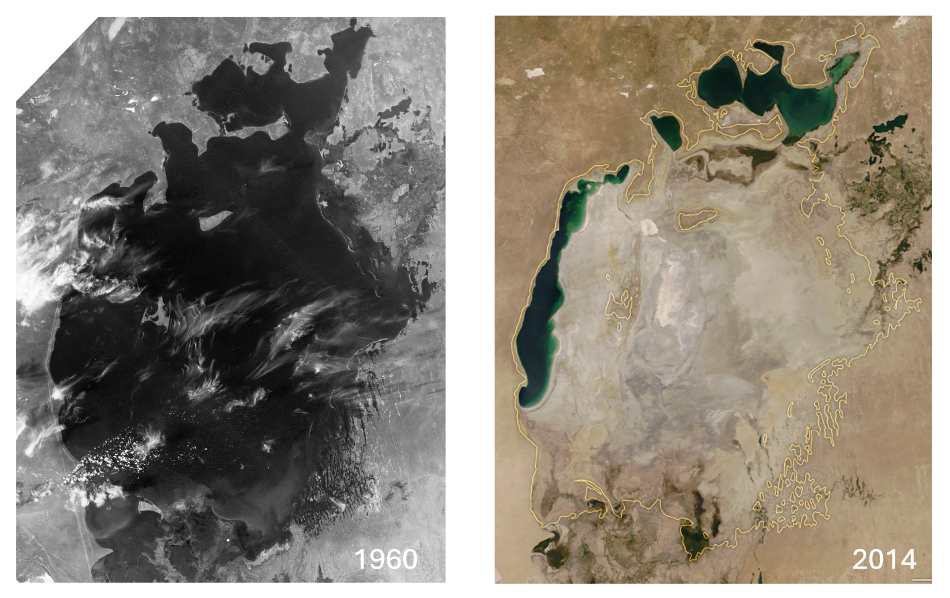Energy Innovation partners with the independent nonprofit Aspen Global Change Institute (AGCI) to provide climate and energy research updates. The research synopsis below comes from AGCI Climate Science Fellow Dr. Tanya Petach. A full list of AGCI’s updates is available online.

In April 2024, residents in Bogotá, Colombia, began rationing water due to critically low water levels in the Chingaza Reservoir System. The rationing system, which impacts over 9 million people living in the capital city, involves rotating 24-hour intervals for household water deliveries, scheduled by neighborhood.
Some 2,000 miles north of Bogotá, residents of Mexico City are grappling with similar water shortages. Water cuts in Mexico City were implemented in May of this year, when the Cutzamala system of reservoirs, which supplies a substantial portion of drinking water to the city’s 22 million residents, reached historic lows. The impacts of water cuts like these often fall disproportionately on lower-income areas.
Both Bogotá and Mexico City are taking drastic actions to avoid a potential “Day Zero” scenario, wherein taps run dry—not temporarily, but in a systemic collapse—due to depleted water supplies. So why are cities increasingly facing such extreme water shortages? Recent research shines a light on the compounding effects of anthropogenic (human-caused) and climate drivers on lake storage. This research provides foundational knowledge that can inform responses to water stress in water supplies.
The stakes of shrinking lakes and reservoirs
The term “Day Zero” was coined in South Africa. From 2015 to 2017, dwindling reservoir storage for Cape Town’s water supply brought the city perilously close to this dreaded scenario. However, in 2018, Cape Town narrowly averted the crisis by severely cutting water consumption to just 50 percent of 2015 levels, coupled with the return of seasonal rains. The city’s experience drew international attention to the vulnerability of urban water systems and the imperative for proactive water conservation measures.
The water availability crises in Cape Town, Bogotá, and Mexico City are all inextricably linked to dependence on lake and reservoir water storage systems. And these municipalities are not alone in facing declining lake and reservoir storage. Globally, the amount of water stored in lakes has drastically and steadily decreased over the last three decades. Every single year during that period, freshwater lakes around the world have collectively lost water storage equivalent to 17 times the volume of Lake Mead, the largest lake in the United States.
A recent, comprehensive study in Science, led by Fangfang Yao of the Cooperative Institute for Research in Environmental Sciences (CIRES) at the University of Colorado at Boulder, examined nearly 2,000 lakes around the world and revealed that 53 percent experienced significant declines in water storage between 1992 and 2020.
While the decline of lake water storage alone is staggering, the research went a step further, attributing declines to either anthropogenic or climate-related causes. Yao’s study identifies three primary drivers of dwindling water levels: unsustainable water consumption, increasing temperatures and evaporation rates, and changes in precipitation patterns and runoff.
By distinguishing between human-caused (overuse) and climate-driven (evaporation, loss of precipitation) decline, the research provides crucial insights for policymakers, hydropower operators, and water resource managers. In cases where lake drying is predominantly driven by unsustainable water use, sustainable withdrawal rates should be prioritized, along with demand management measures and efficiency improvements. Conversely, in cases where climate change emerges as the primary culprit, adaptation strategies such as water conservation, diversification of water sources, and infrastructure resilience may take precedence. The attribution of causality in the dataset produced by Yao and co-authors may help lay a global foundation framework for identifying targeted and effective interventions for diminishing lake water storage.
Lake losses due to overuse: The Aral Sea
Along the Uzbekistan/Kazakhstan border, a vast expanse of 5.5 million hectares of desert now covers the historic lakebed of the Aral Sea. Once the fourth largest lake in the world, the Aral Sea has shrunk by a staggering 88 percent since 1920, with subsequent desertification and dust storms impacting surrounding communities. The lake’s decline has been largely attributed to human overuse, a finding supported by Yao’s attribution work. Despite multinational efforts to prevent further lake decline, water levels have not increased in recent years, prompting ongoing reforestation projects to introduce drought- and salt-tolerant species, such as tamarisk and saxaul, to the region for dust mitigation.

While the Aral Sea has become a poster child for overuse of water in arid regions, it is far from the only example. From the Maipo River in Chile to the Colorado River in the United States, unsustainable water use continues to dry up lakes and stress water supplies. When overuse is the root cause of lake desiccation, the toolbox for solutions expands: in addition to infrastructure changes, overuse can often be addressed through behavioral changes. Yao and his coauthors highlight Lake Sevan in Armenia as an example where enforcement of water conservation and withdrawal limits has led to increases in lake storage in a previously overused basin. Examples like these may have enormous potential to guide strategies for the Aral Sea and many comparable basins.
Lake Losses due to evaporation: Lake Khyargas
Even in river basins with well-balanced water use and demand, climate-related changes in precipitation and evaporation rates can impact lake levels and water availability. In western Mongolia, a steady rise in evaporation, fueled in large part by underlying increases in temperature, has emerged as a primary cause for declining lake levels. This phenomenon is exemplified by the substantial water loss observed in the saline Lake Khyargas, but similar trends of evaporation-driven lake declines are echoed across much of central and western Mongolia.
The climate-driven increase in evaporative losses experienced in Mongolia is reflected in many arid and semi-arid regions around the globe, and recent studies indicate that global mean lake evaporation rates are expected to increase 16 percent by 2100. These exacerbating evaporative losses have sparked creative and innovative infrastructure-based solutions. A floating photovoltaic array covering the Passaúna reservoir in Brazil was found to reduce evaporation by 60 percent, and covering water bodies in thin films can dramatically reduce losses. Other innovations, including thin chemical films, plant coverings, and bubbling cold water from the depths of reservoirs to the surface, have also successfully reduced evaporative losses.
Levers for change
When observed at a global scale, the supply of freshwater is hundreds of thousands of times larger than human water demands — but on local scales, the mismatch between available water resources and needs is dramatic. And water availability issues reach beyond the physical scarcity of water resources. Local demographic and economic factors, such as income disparities and local regions of water poverty, further exacerbate the challenge. In many areas, access to water is compounded by the cost of water itself, creating an additional barrier for low-income communities and contributing to increased water insecurity. The increased incidence of drying lakes is an indicator of future shifts in the complexity of who can access water and how often.
In the face of complex water uncertainty, developing and utilizing a toolbox of adaptive management strategies is crucial. In basins around the globe, creative management strategies are being employed and implemented in myriad ways, from withdrawal limits to shading of reservoirs. These basins can serve as case studies for one another, exemplifying different response strategies and enabling basin managers to expand their toolbox of solutions.
The attribution of case-by-case causes of declining lake storage doesn’t necessarily add another tool to this toolbox, but rather increases the finesse with which these tools can be wielded. Lakes drying in response to increased evaporation require different responses than desiccation caused by human overuse. The ability to tease apart these differences (and sometimes identify cases where both occur simultaneously) can suggest a path forward to address declining lake storage.
Featured research
Duan, Z., Afzal, M. M., Liu, X., Chen, S., Du, R., Zhao, B., … & Awais, M. (2024). Effects of climate change and human activities on environment and area variations of the Aral Sea in Central Asia. International Journal of Environmental Science and Technology, 21(2), 1715-1728.
Genova, P., & Wei, Y. (2023). A socio-hydrological model for assessing water resource allocation and water environmental regulations in the Maipo River basin. Journal of Hydrology, 617, 129159.
Gleick, P. H., & Cooley, H. (2021). Freshwater scarcity. Annual Review of Environment and Resources, 46(1), 319-348.
Mady, B., Lehmann, P., & Or, D. (2021). Evaporation suppression from small reservoirs using floating covers—Field study and modeling. Water Resources Research, 57(4), e2020WR028753.
Orkhonselenge, A., Komatsu, G., & Uuganzaya, M. (2018). Climate-driven changes in lake areas for the last half century in the Valley of Lakes, Govi Region, Southern Mongolia. Natural Science, 10(7), 263-277.
Santos, F. R. D., Wiecheteck, G. K., Virgens Filho, J. S. D., Carranza, G. A., Chambers, T. L., & Fekih, A. (2022). Effects of a floating photovoltaic system on the water evaporation rate in the passaúna reservoir, Brazil. Energies, 15(17), 6274.
Schmidt, J. C., Yackulic, C. B., & Kuhn, E. (2023). The Colorado River water crisis: Its origin and the future. Wiley Interdisciplinary Reviews: Water, 10(6), e1672.
Wescoat Jr, J. L., Headington, L., & Theobald, R. (2007). Water and poverty in the United States. Geoforum, 38(5), 801-814.
Yao, F., Livneh, B., Rajagopalan, B., Wang, J., Crétaux, J. F., Wada, Y., & Berge-Nguyen, M. (2023). Satellites reveal widespread decline in global lake water storage. Science, 380(6646), 743-749.
Youssef, Y. W., & Khodzinskaya, A. (2019). A review of evaporation reduction methods from water surfaces. In E3S web of conferences (Vol. 97, p. 05044). EDP Sciences.